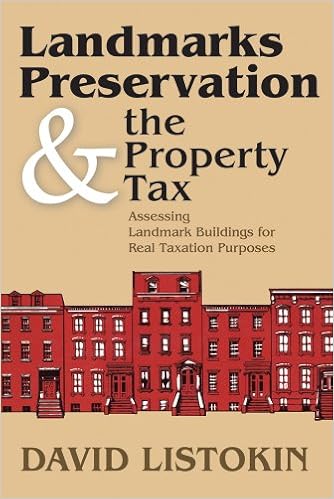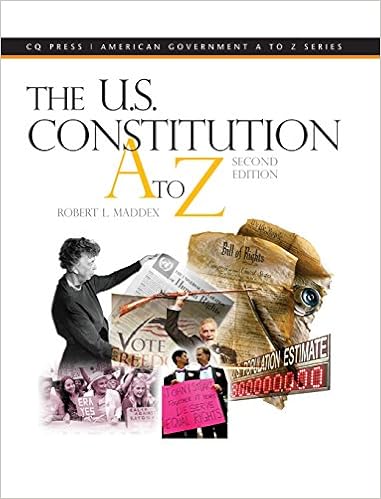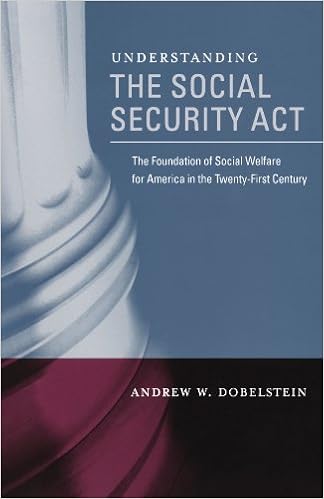A US District Court judge in Los Angeles has issued a 41 page ruling that will hopefully end copyright claims to “Happy Birthday to You” perhaps the most recognized song in the English language. Chief U.S. District Judge George King ruled that the publishers Warner/Chappell Music’s claim to own the copyright to “Happy Birthday” is “implausible and unreasonable.” After an announcement of a documentary about the Happy Birthday song. Warner/Chappell demanded a $1,500 licensing fee, which the company making the film agreed to pay. When Warner/Chappell sent a second letter, warning it could claim a $150,000 statutory penalty for copyright infringement, Good Morning to You Productions, the company making the documentary, filed suit in the US District Court for the Central District of California against Warner/Chappell which has collected millions of dollars in licensing fees for “Happy Birthday to You” although the song has been in the public domain for decades.
 The opinion provides a history of the tune from before 1893, when sisters Mildred and Patty Hill wrote words and music for 73 songs, composed or arranged by Mildred, with words by Patty. They sold or assigned their rights to Clayton F. Summy on Feb. 1, 1893, for 10 percent of retail sales. The songs included “Good Morning to All.” It had the same tune but different words from Happy Birthday. Summy published a songbook that year under the title “Song Stories for the Kindergarten,” and filed a copyright application on Oct. 16, 1893, in which he claimed to own the copyright, but not to be the author. His copyright expired in the 1920s and he did not immediately renew it. A reconstituted company, the Hill Foundation, applied for a new copyright on it in 1934, and a number of lawsuits followed. By then, a number of other companies claimed to own the copyright, including the Board of Sunday Schools of the Methodist Episcopal Church (1912), and the Gospel Trumpet Co. (1928). The opinion states:
The opinion provides a history of the tune from before 1893, when sisters Mildred and Patty Hill wrote words and music for 73 songs, composed or arranged by Mildred, with words by Patty. They sold or assigned their rights to Clayton F. Summy on Feb. 1, 1893, for 10 percent of retail sales. The songs included “Good Morning to All.” It had the same tune but different words from Happy Birthday. Summy published a songbook that year under the title “Song Stories for the Kindergarten,” and filed a copyright application on Oct. 16, 1893, in which he claimed to own the copyright, but not to be the author. His copyright expired in the 1920s and he did not immediately renew it. A reconstituted company, the Hill Foundation, applied for a new copyright on it in 1934, and a number of lawsuits followed. By then, a number of other companies claimed to own the copyright, including the Board of Sunday Schools of the Methodist Episcopal Church (1912), and the Gospel Trumpet Co. (1928). The opinion states:
The Hill sisters gave Summy Co. the rights to the melody, and the rights to piano arrangements based on the melody, but never any rights to the lyrics. Defendants’ speculation that the pleadings in the Hill-Summy lawsuit somehow show that the Second Agreement involved a transfer of rights in the lyrics is implausible and unreasonable.
The summary judgment record shows that there are triable issues of fact as to whether Patty wrote the Happy Birthday lyrics in the late Nineteenth Century and whether Mildred may have shared an interest in them as a co-author. Even assuming this is so, neither Patty nor Mildred nor Jessica ever did anything with their common law rights in the lyrics. For decades, with the possible exception of the publication of The Everyday Song Book in 1922, the Hill sisters did not authorize any publication of the lyrics. They did not try to obtain federal copyright protection. They did not take legal action to prevent the use of the lyrics by others, even as Happy Birthday became very popular and commercially valuable. In 1934, four decades after Patty supposedly wrote the song, they finally asserted their rights to the Happy Birthday/Good Morning melody – but still made no claim to the lyrics.
Defendants ask us to find that the Hill sisters eventually gave Summy Co. the rights in the lyrics to exploit and protect, but this assertion has no support in the record. The Hill sisters gave Summy Co. the rights to the melody, and the rights to piano arrangements based on the melody, but never any rights to the lyrics. Defendants’ speculation that the pleadings in the Hill-Summy lawsuit somehow show that the Second Agreement involved a transfer of rights in the lyrics is implausible and unreasonable. Defendants’ suggestion that the Third Agreement effected such a transfer is circular and fares no better. As far as the record is concerned, even if the Hill sisters still held common law rights by the time of the Second or Third Agreement, they did not give those rights to Summy Co.
In light of the foregoing, Defendants’ Motion is DENIED and Plaintiffs’ Motion is GRANTED as set forth above. Because Summy Co. never acquired the rights to the Happy Birthday lyrics, Defendants, as Summy Co.’s purported successors-in-interest, do not own a valid copyright in the Happy Birthday lyrics.
 The Brooklyn Law School Library has a wealth of material on the subject of copyright often called a “limited monopoly.” When copyrights grow old and die, the works they protect fall into the public domain. Subject to certain exceptions, public domain works may be freely copied or used in the creation of derivative works without permission, or authorization, of the former copyright owners. One book in the BLS Library collection on copyright and the public domain is Without Copyrights: Piracy, Publishing, and the Public Domain by Robert Spoo (Call #KF2994 .S656 2013). The book tells the story of Samuel Roth who made a name–and a profit–for himself by publishing selections from foreign writings–especially the risqué parts–without permission. When he reprinted segments of James Joyce’s novel Ulysses, the author took him to court. The story shows that clashes between authors, publishers, and literary “pirates” influenced both American copyright law and literature itself. From its inception in 1790, American copyright law offered no or less-than-perfect protection for works published abroad–to the fury of Charles Dickens, among others, who sometimes received no money from vast sales in the United States. American publishers avoided ruinous competition with each other through “courtesy of the trade,” a code of etiquette that gave informal, exclusive rights to the first house to announce plans to issue an uncopyrighted foreign work. The climate of trade courtesy, lawful piracy, and the burdensome rules of American copyright law profoundly affected transatlantic writers in the twentieth century. Drawing on previously unknown legal archives, Robert Spoo recounts efforts by James Joyce, Ezra Pound, Bennett Cerf–the founder of Random House–and others to crush piracy, reform U.S. copyright law, and define the public domain.
The Brooklyn Law School Library has a wealth of material on the subject of copyright often called a “limited monopoly.” When copyrights grow old and die, the works they protect fall into the public domain. Subject to certain exceptions, public domain works may be freely copied or used in the creation of derivative works without permission, or authorization, of the former copyright owners. One book in the BLS Library collection on copyright and the public domain is Without Copyrights: Piracy, Publishing, and the Public Domain by Robert Spoo (Call #KF2994 .S656 2013). The book tells the story of Samuel Roth who made a name–and a profit–for himself by publishing selections from foreign writings–especially the risqué parts–without permission. When he reprinted segments of James Joyce’s novel Ulysses, the author took him to court. The story shows that clashes between authors, publishers, and literary “pirates” influenced both American copyright law and literature itself. From its inception in 1790, American copyright law offered no or less-than-perfect protection for works published abroad–to the fury of Charles Dickens, among others, who sometimes received no money from vast sales in the United States. American publishers avoided ruinous competition with each other through “courtesy of the trade,” a code of etiquette that gave informal, exclusive rights to the first house to announce plans to issue an uncopyrighted foreign work. The climate of trade courtesy, lawful piracy, and the burdensome rules of American copyright law profoundly affected transatlantic writers in the twentieth century. Drawing on previously unknown legal archives, Robert Spoo recounts efforts by James Joyce, Ezra Pound, Bennett Cerf–the founder of Random House–and others to crush piracy, reform U.S. copyright law, and define the public domain.
 On the subject of historic sites, the Brooklyn Law School Library has in its collection Landmarks Preservation and the Property Tax: Assessing Landmark Buildings for Real for Real Taxation Purposes by David Lisotkin (Call #KF6535 .L58 2012). The book examines the growing importance of historic preservation. Communities across the country have established designation programs whereby individual buildings or districts of historical-architectural significance are accorded landmark status. It focuses on New York City in considering the effects of historic status on property value and in evaluating assessment practices. Its findings are transferrable to other communities because the base conditions are similar. Many other cities have designation programs modeled on New York City’s. In addition, New York’s property-tax system and administrative processes resemble those found in communities across the nation. To enhance the transferability of this study’s findings, Listokin refers to the national experience and literature, typically on a side-by-side basis with the New York City counterpart.
On the subject of historic sites, the Brooklyn Law School Library has in its collection Landmarks Preservation and the Property Tax: Assessing Landmark Buildings for Real for Real Taxation Purposes by David Lisotkin (Call #KF6535 .L58 2012). The book examines the growing importance of historic preservation. Communities across the country have established designation programs whereby individual buildings or districts of historical-architectural significance are accorded landmark status. It focuses on New York City in considering the effects of historic status on property value and in evaluating assessment practices. Its findings are transferrable to other communities because the base conditions are similar. Many other cities have designation programs modeled on New York City’s. In addition, New York’s property-tax system and administrative processes resemble those found in communities across the nation. To enhance the transferability of this study’s findings, Listokin refers to the national experience and literature, typically on a side-by-side basis with the New York City counterpart.
 On the subject of capital punishment, Brooklyn Law School Library has
On the subject of capital punishment, Brooklyn Law School Library has  The opinion provides a history of the tune from before 1893, when sisters Mildred and Patty Hill wrote words and music for 73 songs, composed or arranged by Mildred, with words by Patty. They sold or assigned their rights to Clayton F. Summy on Feb. 1, 1893, for 10 percent of retail sales. The songs included “Good Morning to All.” It had the same tune but different words from Happy Birthday. Summy published a songbook that year under the title “Song Stories for the Kindergarten,” and filed a copyright application on Oct. 16, 1893, in which he claimed to own the copyright, but not to be the author. His copyright expired in the 1920s and he did not immediately renew it. A reconstituted company, the Hill Foundation, applied for a new copyright on it in 1934, and a number of lawsuits followed. By then, a number of other companies claimed to own the copyright, including the Board of Sunday Schools of the Methodist Episcopal Church (1912), and the Gospel Trumpet Co. (1928). The opinion states:
The opinion provides a history of the tune from before 1893, when sisters Mildred and Patty Hill wrote words and music for 73 songs, composed or arranged by Mildred, with words by Patty. They sold or assigned their rights to Clayton F. Summy on Feb. 1, 1893, for 10 percent of retail sales. The songs included “Good Morning to All.” It had the same tune but different words from Happy Birthday. Summy published a songbook that year under the title “Song Stories for the Kindergarten,” and filed a copyright application on Oct. 16, 1893, in which he claimed to own the copyright, but not to be the author. His copyright expired in the 1920s and he did not immediately renew it. A reconstituted company, the Hill Foundation, applied for a new copyright on it in 1934, and a number of lawsuits followed. By then, a number of other companies claimed to own the copyright, including the Board of Sunday Schools of the Methodist Episcopal Church (1912), and the Gospel Trumpet Co. (1928). The opinion states: The Brooklyn Law School Library has a wealth of material on the subject of copyright often called a “limited monopoly.” When copyrights grow old and die, the works they protect fall into the public domain. Subject to certain exceptions, public domain works may be freely copied or used in the creation of derivative works without permission, or authorization, of the former copyright owners. One book in the BLS Library collection on copyright and the public domain is
The Brooklyn Law School Library has a wealth of material on the subject of copyright often called a “limited monopoly.” When copyrights grow old and die, the works they protect fall into the public domain. Subject to certain exceptions, public domain works may be freely copied or used in the creation of derivative works without permission, or authorization, of the former copyright owners. One book in the BLS Library collection on copyright and the public domain is  ore on the U.S. Constitution, see the BLS Library copy of
ore on the U.S. Constitution, see the BLS Library copy of 



 For historical reading on the subject of women’s suffrage, see the Brooklyn Law School Library e-book called
For historical reading on the subject of women’s suffrage, see the Brooklyn Law School Library e-book called  Additionally, the BLS Library has in its collection
Additionally, the BLS Library has in its collection  The Brooklyn Law School Library has many titles in its collection on the subject of the Voting Rights Act. The latest is
The Brooklyn Law School Library has many titles in its collection on the subject of the Voting Rights Act. The latest is  In the enjoyment all of the Fourth of July sales, picnics,
In the enjoyment all of the Fourth of July sales, picnics,